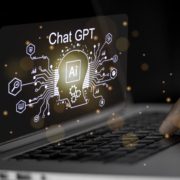Leadership Lessons: Taking Risks and Realizing the Next Challenge
The following blog was written Dolly Ryan, and published by The National Association of Independent Schools. Dolly Ryan spent nine years as a head’s assistant and 27 years as technology director at Belmont Day School in Belmont, Massachusetts, where she began her education career in 1987. She will be retiring from Belmont Day in June 2023 and transitioning into her new role as Director of Education at SecureWon, which specializes in helping schools with cybersecurity assessments, compliance, and training.
In 1986, I accepted a head’s assistant position, a temp agency job that I never planned to stay in long. The job would help to subsidize my love of recording music and being part of a fireworks crew every Fourth of July in Boston, or so I thought. As I got into the role, I began to acquire a skill set that included problem-solving in every facet of school life, taking risks, working outside comfort zones, and listening and learning from mistakes—and I knew I found my calling at an independent school. Heads’ assistants wear many hats, are team players, coaches, and leaders, and as such, they pass on important institutional knowledge about historical perspectives, current events, and future initiatives.
In this role, I began to see how my computer skills, developed through earlier experiences as an executive secretary, would benefit the school. The challenge of how I could transfer my knowledge into helping the school understand what technology could do to streamline workflows and increase efficiencies—while opening possibilities for students—was exciting. I knew I’d want to be at the forefront of leading my school into the digital era.
As I enter my 36th year, serving under seven heads in two completely different leadership roles, I’m reflecting on the journey from head’s assistant to director of technology. If I were to write a book about my journey, I would title it Rock N’ Roll, Fireworks, and Education. When you grow from an administrative position that very few men hold in education to a technology position where very few women lead, reflection becomes the road to new growth. Though reflection time is in short supply these days, it’s important to look back at strides taken and roads paved to gain new perspectives.
In the Beginning
I had no formal training of how to go from support staff to the instructional side with a focus on technology, and at that time, the shift to elementary tech programs was just beginning. But the skills I learned as a head’s assistant set the foundation of how to start, grow, and nurture a technology program from the ground up. To start, I set expectations for myself and the administrative team. I believed that we needed to model the use of technology from the top down.
I researched, took workshops, and taught myself through trial and error how to use applications and fix hardware. I did 1:1 training and small group instruction on business applications, automated the library and administrative offices, and incorporated the school’s first student information system. Administrators were the first to work through steep learning curves, and they started to understand the challenges and prepared to support teachers. This also gave me time to survey teachers, identify early adopters, and create a professional development program.
I worked hard to develop the right culture for a professional development program and sought to keep the needs of teachers and students front and center. Guided by a schoolwide goal of developing an intermediate level of tech skills in all users, I created a model that was flexible and adaptable while also cultivating early tech adopters as resident experts in technology integration. I shared that knowledge, and it was featured at a NAIS workshop as a top 10 professional development model and has since been adopted by two other independent schools.
Implementing technology requires creativity, strength, and persistence—in that order. I’ve strategically transposed lessons learned on the administrative side while gathering teacher perspective to help me see how similar changes would impact, challenge, or promote learning on the instructional side. I’ve noticed that my success or failure has been linked to my level of patience and the ability to stay strong and calm amid a technology storm. Failure is part of the process of adopting tech skills, however, and it requires you to learn from it. Success is measured by how well you can handle failure, learn, grow, and then share your knowledge with others.
Navigating Today’s Challenges
As I reflect on the demand for technology and the pace at which it has been adopted over the years, I’ve had a front-row seat to the changes schools have navigated during the COVID-19 pandemic. Despite burnout, school leaders must continue to be strategic, teach the skills students need to succeed, and protect the infrastructure from hackers that test firewalls at an uncontrollable rate. Student learning loss and cybersecurity incidents continues to increase, and tech departments—often understaffed and underfunded—shoulder much of the responsibility for supporting teachers and protecting school systems. The weight of liability and compliance along with the high stakes associated with the responsibility for astronomical amounts of data is daunting.
My perspective on being able to stay on top of the pace of technology has certainly changed over the years. When I was the head’s assistant, it took me a long time to learn the word “no.” As the gatekeeper to the head’s office, I was often viewed as the person with the history and most of the answers. The same held true when I moved into the director role. It’s impossible to know all things, and learning to say “no” has proved to be invaluable when there are only so many hours in a day. But technology is a bigger challenge now, and we can only hope we are able to stay alongside the rapid advancement of artificial intelligence (AI). I wonder what will happen to creativity when a robot can write your papers for you.
I’m concerned about keeping students safe and emotionally healthy. I question where the balance and oversight will be to keep our systems safe and how we will teach the next generation of coders. We are already hearing about exposure to sensitive data and the ability of AI to imbed that data in its algorithms. Currently, there are a lot more questions than answers for educational institutions, but remember, we’ve been here before.
Our responsibility around safeguarding learning environments continues to grow, and there are days when the demands feel impossible. Lifelong learners will reach deep to find ways to continue to reinvent themselves and their programs. I say, live your favorite lyric, take risks, and lead with humor and good intentions.
SecureWon is at its core is a national technology services company and offers a specialized area of focus in Educational Technology. What separates us from other technology service providers is our commitment to providing superior documentation and accurate reporting of your organization’s security posture. This attention to detail and quality of our services is what drives us. Call today for a free assessment of your technology infrastructure.



